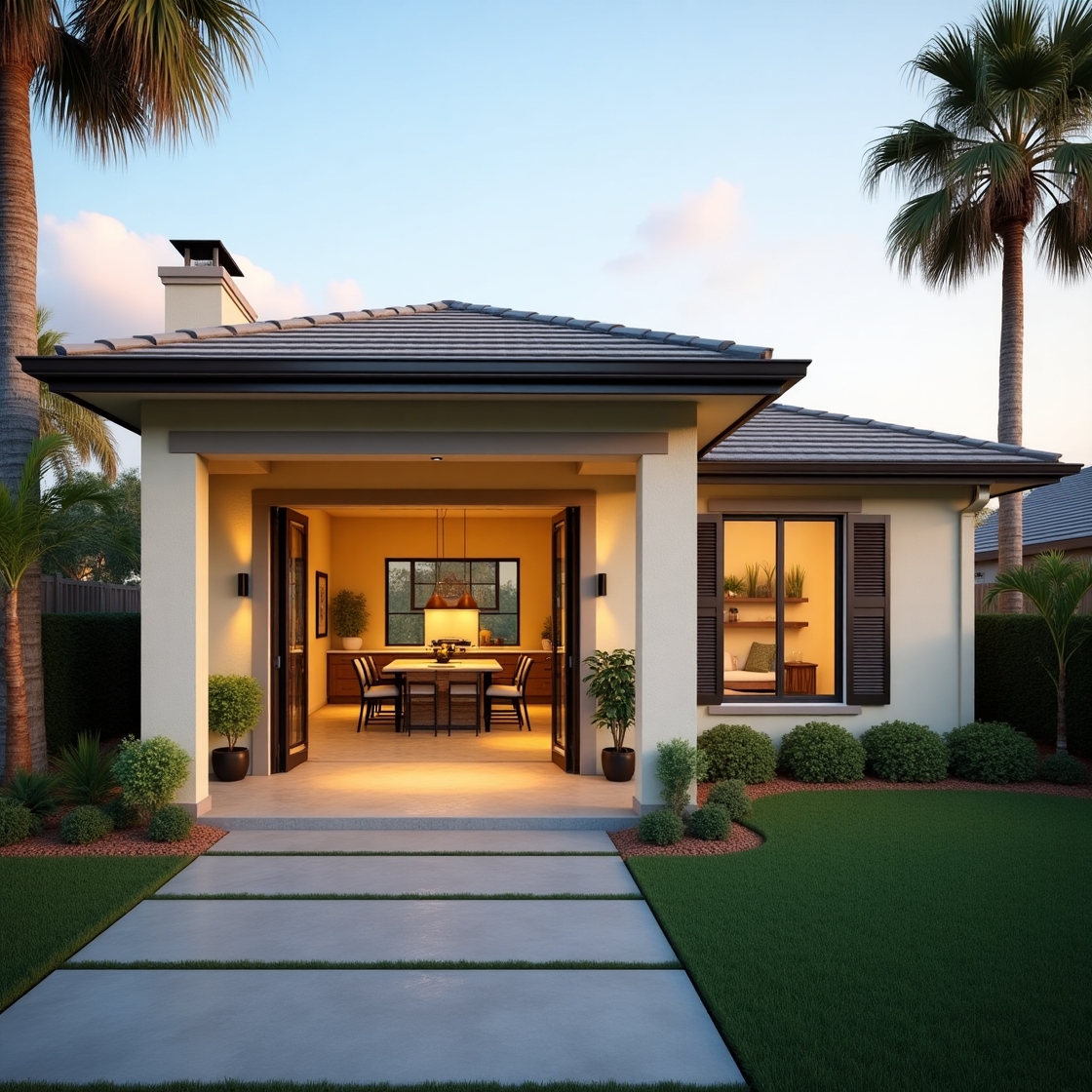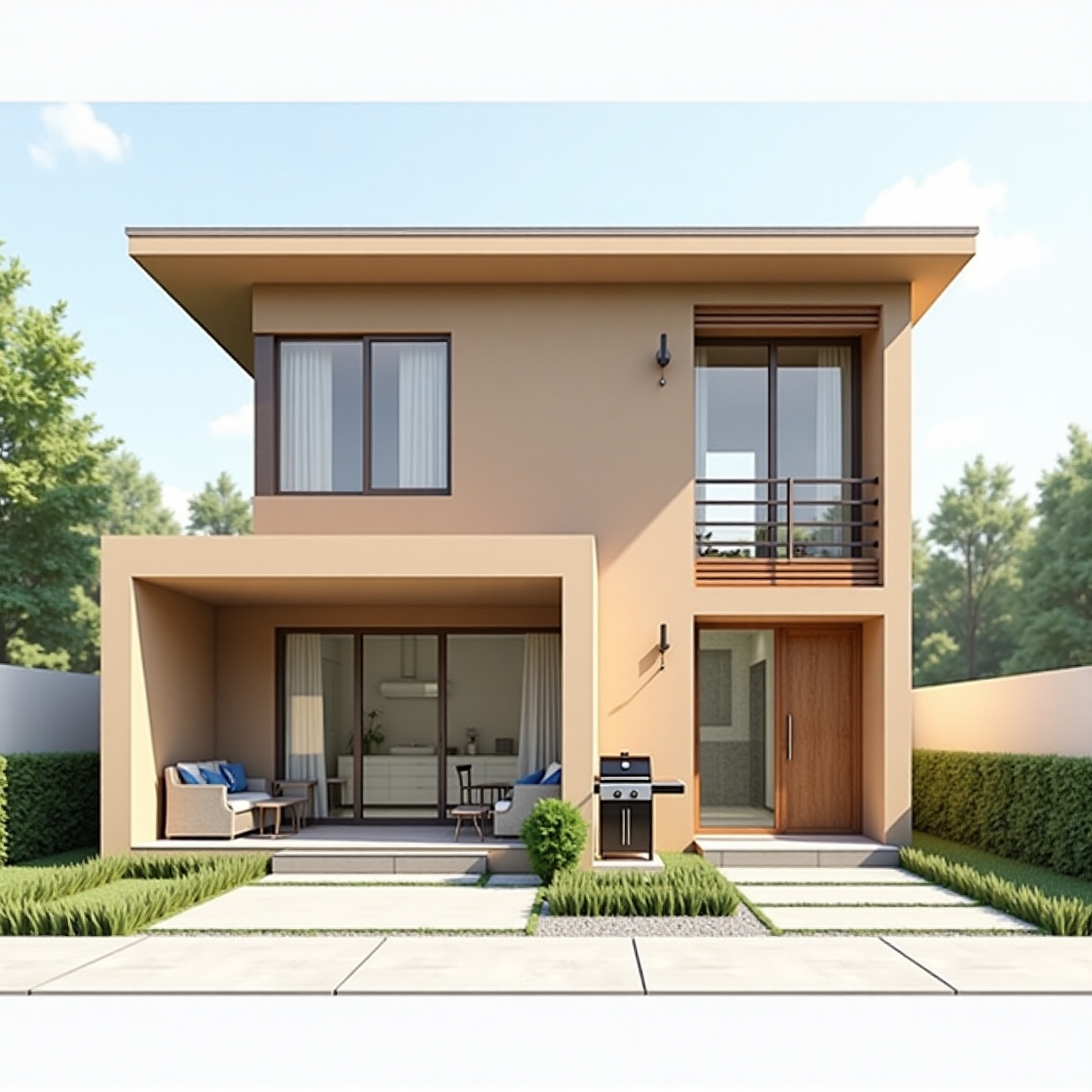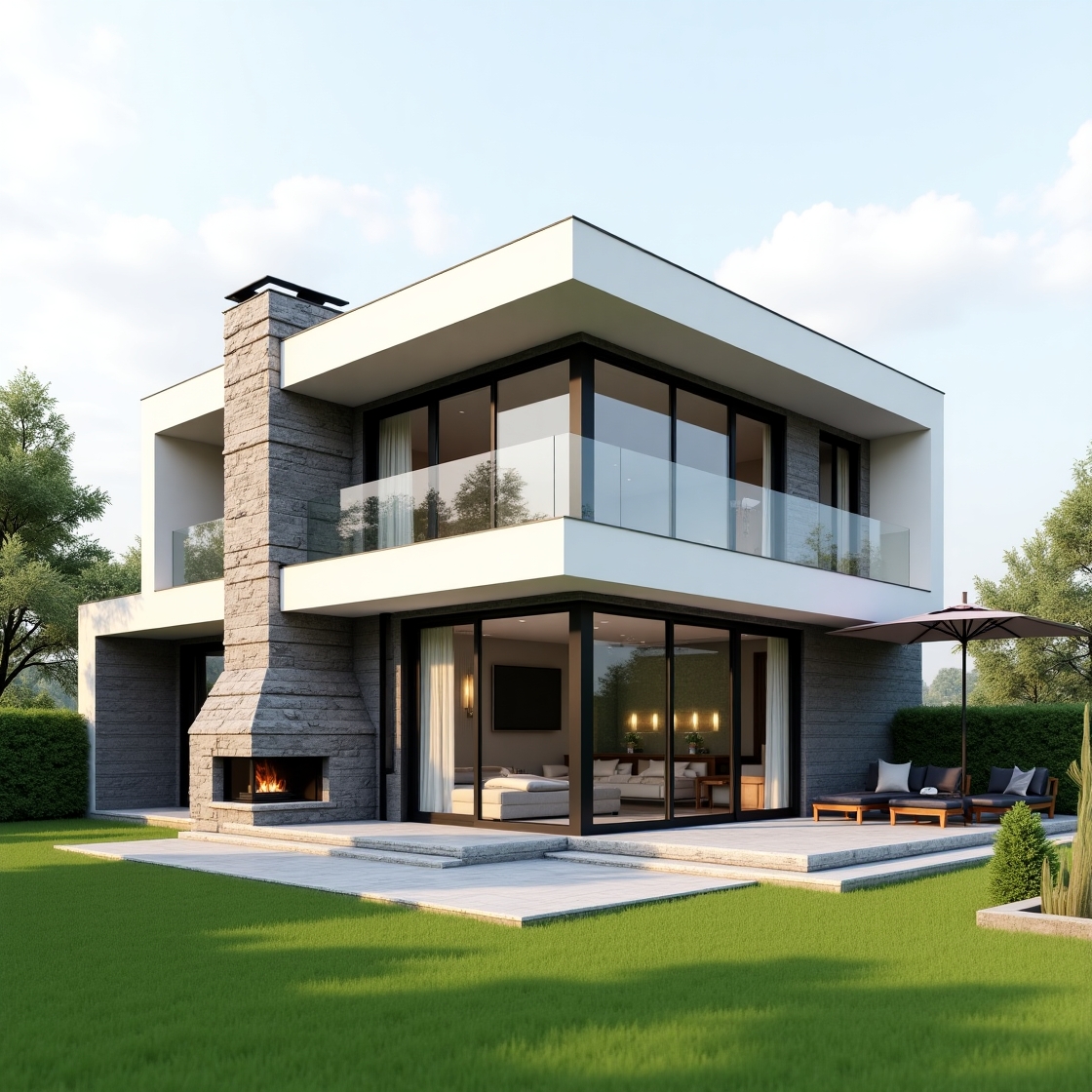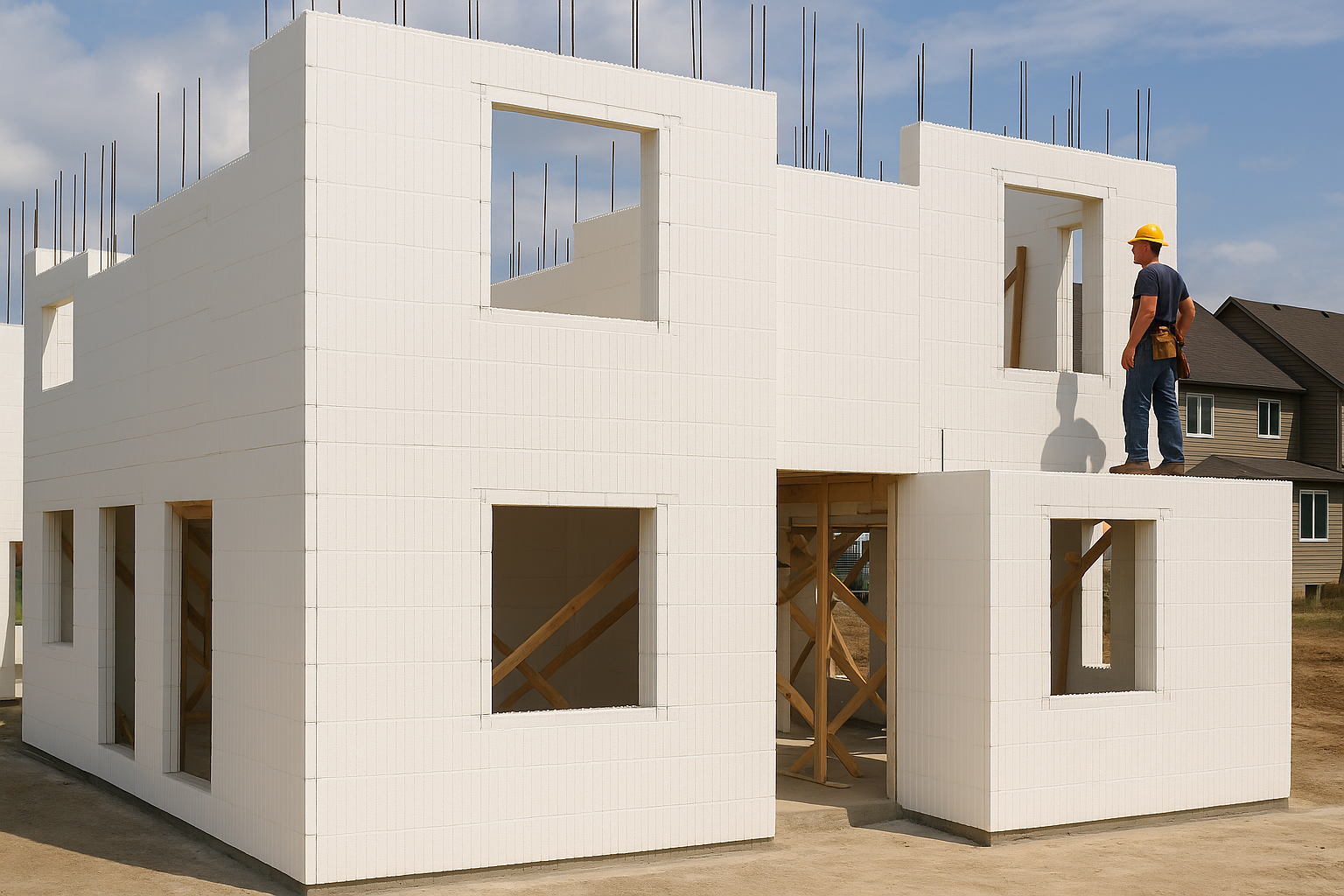Website Title: ICF Technologies Today
Overall Goal: To be a leading online resource for homeowners, builders, architects, and anyone interested in learning about the latest advancements, benefits, and applications of Insulated Concrete Form (ICF) construction.
Page 1: Homepage
- Title: ICF Technologies Today: Building a Stronger, Greener Future
- Hero Section:
- Compelling headline: “Discover the Power of Insulated Concrete Forms: Energy Efficient, Disaster Resilient, and Built to Last.”
- High-quality image/video montage showcasing modern ICF construction (different stages, finished homes/buildings).
- Brief introductory paragraph: What is ICF? (Foam forms filled with concrete). Highlight 2-3 key benefits immediately (e.g., Superior Energy Efficiency, Unmatched Strength, Year-Round Comfort).
- Clear Call-to-Action (CTA): “Learn More About ICF” (links to “What is ICF?”) or “Explore the Benefits” (links to “Benefits” page).
- Key Benefits Overview (Icon-based Section):
- Icons + Short Text for major benefits:
- Energy Savings (Thermos icon)
- Strength & Safety (Shield icon)
- Sound Blocking (Ear/Soundwave icon)
- Comfort & Air Quality (House/Leaf icon)
- Sustainability (Recycle/Green icon)
- Link to the main “Benefits of ICF” page.
- Icons + Short Text for major benefits:
- What’s New in ICF? (Teaser Section):
- Headline: “The Evolution of Building: What’s New in ICF Technology?”
- Briefly mention recent advancements (e.g., higher R-values, integrated systems, faster assembly).
- Link to a dedicated “Innovations” page or blog section.
- Who Uses ICF? (Applications Teaser):
- Showcase small images/icons representing different applications (e.g., Modern Home, School Building, Apartment Complex, Basement).
- Short text: “From custom homes to commercial projects, ICF offers versatile solutions.”
- Link to “Applications & Gallery” page.
- Testimonial Snippet (Optional):
- A short quote from a homeowner or builder about their positive experience with ICF.
- Footer: Standard navigation links, copyright, privacy policy.
Page 2: What is ICF?
- Title: Understanding Insulated Concrete Forms (ICF)
- Introduction:
- Clear, simple definition: ICFs are stay-in-place formwork systems, typically made of rigid foam insulation, used to build cast-in-place concrete walls.
- Explain the core components:
- Foam Panels/Blocks: Usually Expanded Polystyrene (EPS) or Extruded Polystyrene (XPS). Detail their role (insulation, formwork).
- Webs/Ties: Typically plastic or metal, holding the foam panels together, creating the cavity for concrete, and often providing attachment points for finishes. Explain their structural role.
- Concrete Core: Standard reinforced concrete, providing the structure’s strength.
- How ICF Walls are Built (Simplified Process):
- Step 1: Foundation preparation.
- Step 2: Stacking the ICF blocks/panels (like large Lego bricks).
- Step 3: Installing reinforcement (rebar) within the forms.
- Step 4: Pouring concrete into the forms.
- Step 5: Curing (forms stay in place permanently).
- Step 6: Applying interior and exterior finishes directly to or via the webs/ties.
- Use diagrams or short video clips if possible.
- Types of ICF Systems:
- Briefly mention common types:
- Block Systems: Most common, interlocking blocks.
- Panel Systems: Larger panels requiring more setup/bracing.
- Plank Systems: Similar to panels but often individual flat pieces assembled on-site.
- Note that the core principle remains the same.
- Briefly mention common types:
- Key Takeaway: Emphasize that ICF combines structure, insulation, air barrier, and vapor retarder (depending on specifics) into one efficient construction step.
- CTA: “See How ICF Benefits Your Project” (links to Benefits page) or “View ICF in Action” (links to Gallery).
Page 3: Benefits of ICF Construction
- Title: Why Choose ICF? Unpacking the Advantages
- Introduction: ICF offers a multitude of benefits over traditional construction methods. This page details the key advantages.
- Detailed Benefit Sections (Each with Explanation & Data if possible):
- 1. Superior Energy Efficiency:
- High Thermal Resistance (R-Value): Explain R-value and typical ICF ranges (R-22+ often). Compare to standard wood-frame walls.
- Thermal Mass: Explain how concrete mass helps regulate temperature, reducing energy spikes.
- Air Tightness: Explain how the continuous foam and concrete minimizes air leaks, a major source of energy loss. Mention typical ACH (Air Changes per Hour) results.
- Result: Significant savings on heating and cooling costs (cite potential percentages, e.g., 30-70%).
- 2. Exceptional Strength & Durability:
- Steel-Reinforced Concrete Core: Inherently strong.
- Disaster Resilience: High resistance to high winds (hurricanes, tornadoes), earthquakes, and impact. Mention FEMA standards/ratings if applicable.
- Longevity: Resistant to rot, decay, and pests (termites, rodents).
- 3. Enhanced Comfort & Sound Insulation:
- Sound Transmission Class (STC) Rating: Explain STC ratings and typical ICF values (STC 50+), comparing them to wood frames (STC 35-40).
- Result: Drastically quieter interiors, blocking outside noise (traffic, neighbors).
- Stable Indoor Temperatures: Reduced drafts and consistent temperatures year-round.
- Improved Air Quality: Reduced air infiltration means fewer allergens and pollutants enter.
- 4. Fire Safety:
- High Fire Resistance Rating: Explain fire ratings (e.g., 2-4 hours+). Concrete is non-combustible, foam is treated with fire retardants. Compare to wood frame.
- 5. Design Flexibility:
- Can accommodate virtually any architectural style, curves, openings.
- Easier integration of utilities within the foam or concrete placement.
- 6. Sustainability & Environmental Impact:
- Reduced Energy Consumption (operational energy).
- Durability = Less replacement/repair waste.
- Use of recycled materials (in some ties/foam).
- Minimal job site waste (less wood cutting).
- Contributes to Green Building Certifications (LEED, ENERGY STAR).
- 1. Superior Energy Efficiency:
- Summary Table (Optional): Quick comparison of ICF vs. Wood Frame on key benefits.
- CTA: “Ready to Build with ICF? Find Resources Here” (links to Resources page) or “See Examples of ICF Buildings” (links to Gallery).
Page 4: Applications & Project Gallery
- Title: ICF in Action: Versatile Applications & Inspiring Projects
- Introduction: ICF isn’t just for one type of building. Its versatility makes it suitable for a wide range of projects.
- Application Categories (with descriptions & gallery links/sections):
- Residential: Custom Homes, Multi-Family Units (Apartments, Townhouses), Basements, Additions. (Highlight energy savings, comfort, safety).
- Commercial: Schools, Hotels, Office Buildings, Warehouses, Retail Centers. (Highlight durability, energy efficiency for lower operating costs, speed of build).
- Institutional: Hospitals, Government Buildings, Community Centers. (Highlight safety, longevity, soundproofing).
- Specialty: Safe Rooms, Sound Studios, Indoor Pools, Agricultural Buildings. (Highlight specific benefits like strength or soundproofing).
- Project Gallery:
- Organize by project type (Residential, Commercial, etc.).
- Use high-quality photos (exterior, interior, construction process if available).
- For each project (or select case studies):
- Project Name/Type
- Location (City/State, optional)
- Key Features/Challenges Addressed by ICF
- (Optional) Architect/Builder name
- (Optional) Short testimonial snippet related to the project.
- CTA: “Explore the Building Process” (links to How it Works) or “Discuss Your ICF Project” (links to Contact).
Page 5: ICF Technologies Today: Innovations & Trends
- Title: The Leading Edge: Innovations in ICF Technology
- Introduction: ICF technology is constantly evolving. This section explores current trends and advancements making ICF even more effective and efficient.
- Key Areas of Innovation:
- Enhanced Thermal Performance: Thicker foam panels, improved EPS/XPS formulations, thermal breaks in webs for even higher R-values.
- Streamlined Installation: Lighter blocks, improved interlocking mechanisms, reversible forms, taller forms, integrated measurement systems, specialized bracing systems.
- Advanced Web/Tie Designs: Stronger ties, ties made from recycled materials, ties designed for easier utility placement or specific finish attachments (e.g., integrated furring strips).
- Integration with Other Systems: Designs facilitating easier integration with smart home technology, renewable energy systems (solar conduits), advanced HVAC, and exterior insulation finishing systems (EIFS).
- Sustainability Focus: Increased use of recycled content in foam and webs, reduced global warming potential (GWP) blowing agents in foam manufacturing, focus on LCA (Life Cycle Assessment).
- Code Recognition & Testing: Ongoing testing and updates to meet or exceed evolving building codes and standards for energy, structure, and fire safety.
- Specialized ICF Products: Forms designed for specific applications like lintels, corners, T-walls, curved walls, or below-grade use.
- Future Outlook: Briefly discuss potential future directions (e.g., bio-based foams, phase change materials, further automation).
- CTA: “Have Questions about the Latest ICF Tech?” (links to FAQ or Contact) or “Return to ICF Benefits” (links to Benefits page).
Page 6: Resources & FAQ
- Title: Your ICF Questions Answered: Resources & FAQ
- Introduction: Find answers to common questions and access helpful resources for your ICF journey.
- Frequently Asked Questions (FAQ Section – Categorized):
- Cost: How does ICF cost compare to wood frame (initial vs. long-term)? What factors influence ICF project cost? Are there tax credits or rebates?
- Building Process: How long does ICF construction take? Can I DIY ICF? Do I need specialized contractors? How are electrical/plumbing installed? What finishes can be used?
- Performance: What is the real R-value? How long does ICF last? Is it prone to moisture issues? Is it really pest-proof?
- Technical: What are the different brands? Does ICF work in all climates? Are there limitations to ICF?
- Resource Links:
- Industry Associations: Links to reputable organizations (e.g., ICFMA – Insulating Concrete Forms Manufacturers Association, PCA – Portland Cement Association).
- Green Building Programs: Links to LEED, ENERGY STAR for Homes, Passive House Institute.
- Case Studies: Link to more detailed project examples (can be blog posts or PDFs).
- Glossary of Terms: Define key ICF and construction terminology.
- (Optional) Directory/Locator: Link to manufacturer or association directories to find local suppliers or trained installers (use disclaimer).
- Blog/News Section (if applicable): Link to the blog for ongoing updates, tips, and news.
- CTA: “Still Have Questions? Contact Us!” (links to Contact page).
Page 7: Contact Us
- Title: Get in Touch with ICF Technologies Today
- Content:
- Encouraging text: “Have questions about ICF? Planning a project? We’d love to hear from you.”
- Contact Form: Name, Email, Phone (Optional), Subject, Message.
- Direct Contact Info: Email address, Phone number (if applicable).
- Location (if a physical entity): Address, Map (optional).
- Social Media Links (if applicable).
General Website Considerations:
- SEO: Optimize page titles, descriptions, headings (H1, H2, etc.), and content with relevant keywords (ICF, Insulated Concrete Forms, energy efficient construction, concrete homes, building technology, etc.).
- Visuals: Use high-quality, relevant images and videos throughout the site. Diagrams are very helpful for explaining concepts.
- Mobile Responsiveness: Ensure the website works perfectly on all devices (desktops, tablets, smartphones).
- Navigation: Clear, logical, and consistent navigation menu.
- Calls to Action (CTAs): Strategically place CTAs on each page to guide users.
- Tone: Informative, authoritative, yet accessible and encouraging.
- Accuracy & Updates: Ensure information is current and accurate, especially regarding R-values, codes, and technology trends. Plan to update content periodically.




